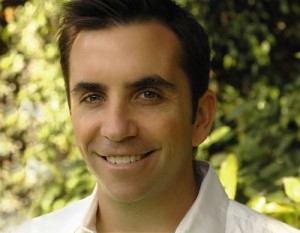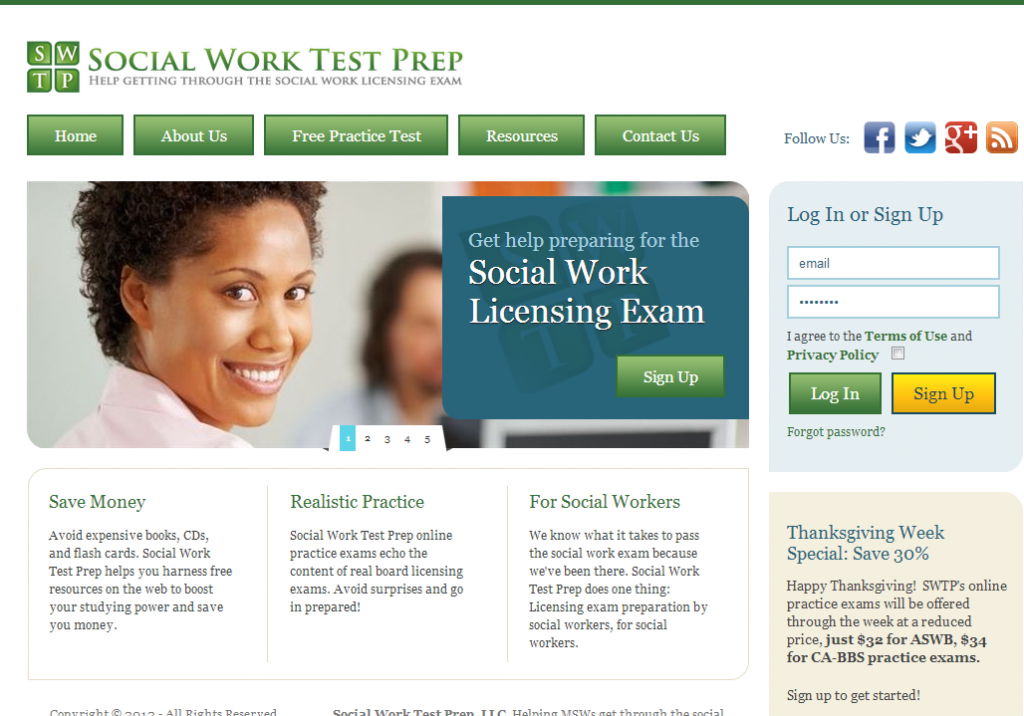 Corey Quinn is founder of WTCI affliate MyTherapistMatch.com, a service that matches clients and therapists based upon results of a personality-traits survey. He talked to WTCI via email about why he started the company and how it does what it does.
Corey Quinn is founder of WTCI affliate MyTherapistMatch.com, a service that matches clients and therapists based upon results of a personality-traits survey. He talked to WTCI via email about why he started the company and how it does what it does.
MyTherapistMatch.com is offering one month free to WTCI readers. Sign up using coupon code 204.
What’s your background?
I was born and raised as an only child in an entrepreneurial family here in Los Angeles. After graduating college, I started up an Internet company in 1999, where we raised $6 million in seed funding. The company streamed live events on the web (webcasting) and unfortunately took a hit in the bubble burst of 2000/2001. After that, I went into financial services and eventually made my way back to school to get my MBA in finance and entrepreneurship from the Marshall School of Business at USC. Just before entering business school, I went back into the internet industry, where I’ve been ever since.
Currently, I am the founder and CEO of MyTherapistMatch.com. MyTherapistMatch.com is a website that matches individuals with therapists based on compatibility.
What made you start MyTherapistMatch.com?
When my parents decided to get a divorce, they put me in therapy. I was 12 years old. My first experiences with being in therapy were positive. My therapist Jackie and I played games, ate candy and just kind of hung out. Her low key approach to therapy worked for me, and as we became friends, I began to open up to her. She was my ally and helped me successfully deal with the range of emotions I was experiencing though the divorce.
Several years later, when I was in high school I wanted to speak with another therapist about typical “growing up” type issues. I began having sessions with Cathy, the school counselor. Cathy was amazing – I felt like she and I were able to talk and relate on a deep level. I felt like she could really understand me – more than anyone else ever could. The work that she and I did fundamentally transformed and improved my life in amazing ways. Looking back, I am so grateful for her and our therapy sessions.
That was the last time that therapy was amazing for me until recently (I am 35 years old). I had a series of mildly disappointing experiences while seeking therapy after high school. Each time, I would go to a website to find a therapist (such as an insurance website, therapist finder directory, etc.) and would find a couple of therapists that seemed to have the right experience, areas of focus, etc., call them and set up initial appointments.
My hope was that I would find another Jackie or Cathy, but what I found were therapists who were not quite what I had previously experienced. All were licensed, competent and well intentioned, but there wasn’t that connection, I didn’t feel that powerful chemistry that was the important ingredient in the transformational process.
Instead of continuing to shop around to find the “right” therapist, I would decide to stay with a good, but not great (for me) therapist – more out of convenience than anything else. I was not in the mood to interview a large number of therapists to find the right one. I was ready to begin the therapeutic process – to start the work. I would come to find that the outcome of these therapy sessions was positive but it was not the transformational experience I was hoping for.
At the end of one not so satisfying therapy session, I thought to myself – “there has got to be a better way to find a ‘good’ therapist.” Good meaning one that I can really feel connected to and trust at a deep level.
I spent some time thinking about different ways to solve this puzzle, and it hit me – take an eHarmony style compatibility approach and apply it to the finding a therapist process. While the client/therapist relationship is not romantic in nature, the requirement for interpersonal trust and rapport does apply. This was the genesis for MyTherapistMatch.com
What do you do now?
As the founder and CEO of MyTherapistMatch.com, I spend much of my time improving the visibility of the MyTherapistMatch.com site to individuals who are actively seeking a therapist. Finding the right therapist is the most important decision in therapy, and by using MyTherapistMatch.com, individuals looking for a therapist can dramatically reduce the amount of time and improve the probability of finding a compatible therapist. In our first month (we launched in November 2009), we had two times the number of people complete our compatibility survey than we had therapists on our site. We are growing in January and look forward to a great 2010.
How’d you come up with the criteria? Why, for instance, “preferred orientation in time”?
My co-founder and I created the matching survey and algorithm. We base the matching criteria found in our survey and algorithm on our understanding of interpersonal rapport. Dr. Robert Dee McDonald, co-founder of MyTherapistMatch.com, is a therapist who has taught interpersonal communication skills in 18 countries to thousands of students. He has been in private practice for over 35 years, has taught psychology as the University of San Francisco, and is a co-author of the best selling NLP book of all time: The New Technology of Achievement.
We know that in general, people like people who are like them. The same is true for therapists and clients. In the therapeutic realm, the client must feel a great deal of trust in the therapist for real change to happen. Without this trust, clients will not open themselves up to the therapist, making the effort futile, extending the therapeutic process for the client, running up the cost of doing therapy and more. The premise of MyTherapistMatch.com is that we help people find the right therapist by getting connected with a therapist who moves through the world in a similar way to the client, thereby increasing the probability of natural rapport and trust.
In the case of “preferred orientation in time,” which is just one of the 23 criteria with which we match therapists and clients, people tend to “live” in either the present, future or past. We match therapists and clients who prefer one of the three orientations similiarly. Contrarily, if we were to match up a client who prefers to be future oriented with a therapist who prefers to be past oriented, there will most likely be a subtle disconnect. Providing support for the preferred orientation in time concept, Dr. Philip Zimbardo, former president of the APA and Professor Emeritus at Stanford University, has recently presented his findings, called Time Perspectives. Please see the following video clip (duration 2:23): http://www.youtube.com/watch?v=DlTphlvB0xs.
Is there evidence that this kind of compatibility helps in a therapeutic relationship?
There is no hard evidence to support our ideas about this particular kind of compatibility. But we do know from clinical evidence that therapists report that when there is deep rapport, there is a higher probability of therapeutic movement. Carl Rogers, PhD., founder of Person Centered Counseling, said that compatibility is absolutely necessary to create a climate for therapeutic change. In addition, Bruce Wampold, from the University of Wisconsin, reported in 2001 that the therapeutic alliance, i.e., rapport, is a key factor in psychotherapy.
In addition, much of the criteria with which we match people are based on the works of well known psychologists, such as Carl Rogers, PhD, Virginia Satir, PhD, Fritz Perls, MD and Milton Erickson, MD.
Has My Therapist Match been working–are clients and therapists matching up and doing good work so far…?
I am grateful to say that MTM is working. We are only in our 3rd month, so the feedback is just starting to come in. The feedback that we have received so far from therapists on our site has been generally positive. In addition, the feedback we collect from our therapist members gets fed back into our matching algorithm, allowing us to better understand the core drivers of a good match for clients and therapists. In that way, our algorithm learns and improves over time.
Corey Quinn’s company is MyTherapistMatch.com.

Leave a Reply
You must be logged in to post a comment.